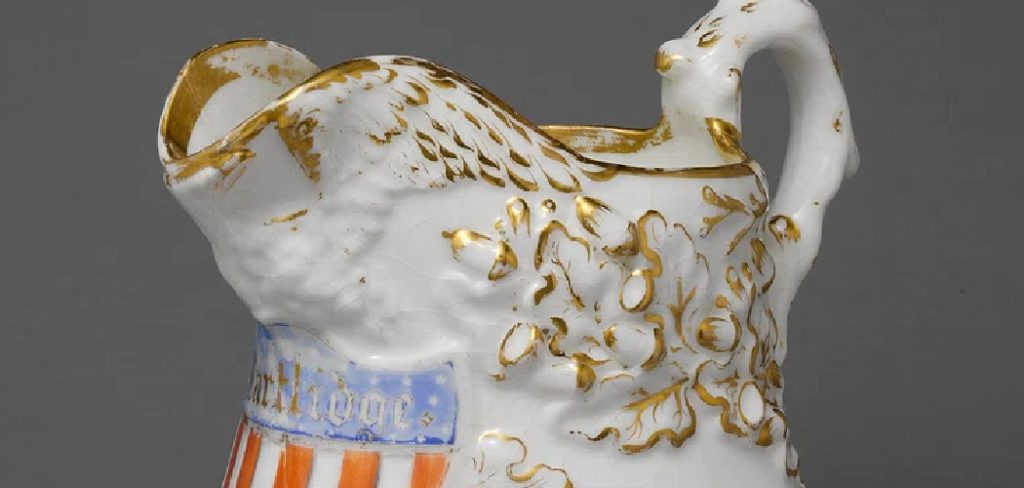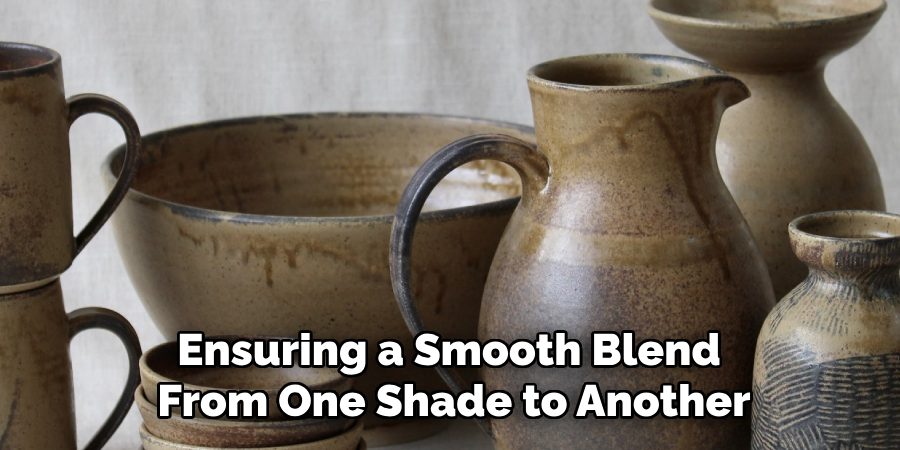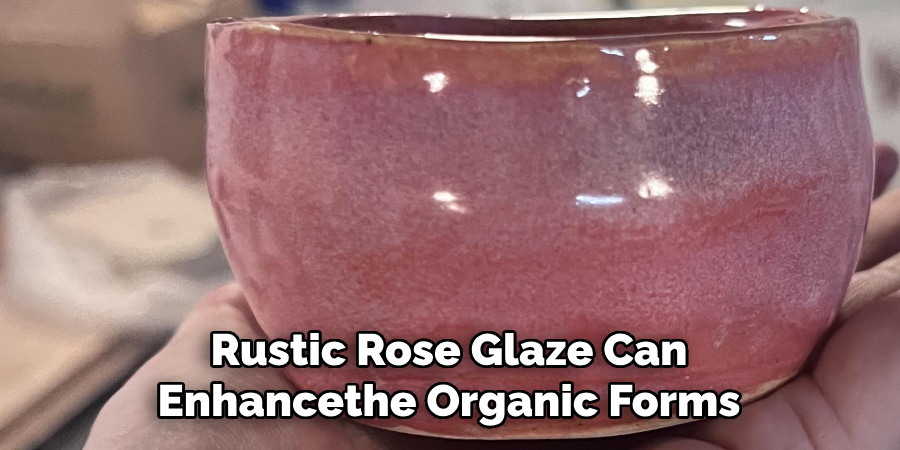Creating a stunning ceramic piece involves not only shaping the form but also choosing the right glaze to bring it to life. The Rustic Rose glaze offers a unique blend of earthy tones with a hint of pink, perfect for adding warmth and character to your ceramics. This guide will walk you through how to use rustic rose glaze on ceramics, from preparation to application, ensuring that your final piece achieves the desired aesthetic appeal. Whether you’re a seasoned potter or a beginner, learning to work with this glaze can add a distinctive touch to your creations.

Importance of Glazing in Ceramic Finishing
Glazing is a crucial step in ceramic finishing that serves both functional and aesthetic purposes. Functionally, a glaze provides a protective layer, sealing the porous surface of the clay and making the ceramic piece waterproof. This is especially important for items meant to hold liquids, such as bowls, mugs, and vases.
Aesthetically, glazing offers an extensive range of colors, textures, and surface effects, allowing artists to express their creativity and enhance the visual appeal of their work. Different glazes can bring out various features of the ceramic form, add depth through layering, or create unique surface patterns through techniques like crackling or melting. Consequently, mastering the art of glazing is vital for any ceramist aiming to produce durable and beautiful pieces.
Tools and Materials Needed
To successfully apply the Rustic Rose glaze to your ceramic pieces, you’ll need a specific set of tools and materials to achieve the best results. Here is a list of what you’ll require:
- Rustic Rose Glaze: This is the primary material and can be purchased from most ceramic supply stores.
- Ceramic Pieces: Ensure your pieces are bisque-fired and ready for glazing.
- Brushes: A variety of brushes, including small detail brushes and larger flat brushes, for applying glaze evenly over the surface.
- Glaze Tongs: Useful for handling smaller pieces to avoid smudges.
- Sponges: For wiping and cleaning surfaces or edges where glaze is not desired.
- Mixing Sticks: To stir the glaze and ensure it’s the correct consistency before application.
- Kiln: Essential for firing the glazed ceramic pieces to set the glaze properly.
- Gloves and Apron: Protective wear to keep your clothes clean and protect your skin from glaze stains.
- Cleaning Supplies: Such as water, cloth, and paper towels for maintaining a tidy workspace.
Having these tools and materials on hand will ensure a smooth glazing process and help in creating beautiful, finished ceramic pieces.

10 Creative Ways How to Use Rustic Rose Glaze on Ceramics
Incorporating textures and hues that highlight natural beauty has become a popular trend in ceramics. Among these, the Rustic Rose glaze stands out for its warm, earthy tone that evokes a sense of comfort and elegance.
1. Highlighting Intricate Designs
Rustic Rose glaze can beautifully accentuate intricate patterns and carvings on your ceramic pieces. The glaze naturally pools into the crevices, creating depth and contrast. Try applying it to detailed vases or bowls to make your designs pop.
2. Creating a Gradient Effect
For a soft, flowing look, apply the Rustic Rose glaze in layers to create a gradient effect. It’s perfect for pieces like tall mugs or pitchers, where the gradual color transition can add visual interest. The key is in the controlled application, ensuring a smooth blend from one shade to another.

3. Accentuating Textured Surfaces
Use the glaze to highlight textured surfaces, such as those achieved through stamping, pressing, or carving. The glaze will settle in lower areas, enhancing the texture while providing an antique-like finish. This technique is particularly effective on larger items like platters or wall tiles.
4. Combining with Other Glazes
Pair Rustic Rose with complementary glazes like matte white or deep charcoal to create striking contrasts. This combination can lend a modern twist to traditional styles, making it ideal for statement pieces like serving trays or decorative bowls.
5. Using as a Wash
For a subtle touch of color, dilute the Rustic Rose glaze with water and apply it as a wash. This technique allows the natural clay body to shine through while adding a hint of rosy warmth. It’s a great approach for achieving a minimalist aesthetic on plates and cups.
6. Adding Layered Effects
Apply multiple layers of Rustic Rose glaze to create a rich, layered texture. Each coat should be allowed to dry before the next is applied, resulting in a piece with depth and complexity. This method works particularly well for artistic pieces like sculptural vases.
7. Enhancing Natural Forms
Rustic Rose glaze can enhance the organic forms of hand-built ceramics. Apply it to flowing, irregular shapes to emphasize the natural beauty of the clay. This approach is ideal for unique, one-of-a-kind decorative items.

8. Highlighting Rims and Edges
Accentuate the rims and edges of your ceramic pieces by focusing the glaze application on these areas. This technique adds definition and can make functional ware like plates and bowls stand out.
9. Creating a Rustic Finish
Achieve a rustic, earthy finish by pairing Rustic Rose with a speckled clay body. The natural variations in the clay combine with the glaze to create an authentic, handcrafted appearance that’s perfect for farmhouse-style decor.
10. Experimenting with Firing Techniques
Experiment with different firing techniques to alter the final appearance of the Rustic Rose glaze. High-fire temperatures can deepen the glaze’s color, while reduction firing can bring out unique patterns and textures. This experimentation makes each piece truly unique.
Maintenance and Upkeep
Proper maintenance and upkeep of your glazed ceramic pieces ensure their longevity and continued aesthetic appeal. Start by handling your ceramics with care, especially handmade or intricate items, to minimize the risk of chips and cracks. Regular cleaning is essential; however, use gentle, non-abrasive cleaning agents and soft cloths or sponges to avoid damage to the glaze. When storing glazed pieces, avoid stacking them without protective padding to prevent surface scratches and glazing wear. Additionally, inspect your ceramics periodically for any signs of deterioration or damage, addressing issues promptly to prevent further degradation. If any piece needs repair, consider consulting a professional to maintain the integrity and beauty of your collection. By following these upkeep tips, you ensure that your Rustic Rose glazed ceramics remain a treasured part of your home.
Troubleshooting Common Issues
Despite careful application, certain challenges might arise when working with Rustic Rose glaze. Understanding how to address these issues will improve the quality of your ceramic pieces.
Uneven Glaze Application
Uneven glaze application is a common issue that can affect both aesthetics and functionality. To resolve this, ensure that your glaze is mixed to a uniform consistency before applying. Using a damp sponge to lightly wipe the surface of the bisque-fired piece can help promote even application. If significant discrepancies occur, try sanding the piece lightly and reapplying the glaze.
Pinholing and Blistering
Pinholing and blistering may occur due to trapped air or improper firing. To prevent this, ensure that your ceramic pieces are thoroughly cleaned and dried before glazing. Pay attention to the firing schedule; rapid temperature increases can exacerbate these issues. Slow and even heating, especially during the bisque firing, can help alleviate pinholing and blistering problems.
Crawling
Crawling, where the glaze pulls away from areas of the ceramic surface, can be attributed to dust or grease interference. To address this, thoroughly clean your piece before glazing, and avoid handling it with bare hands. Using a slightly thicker glaze can also help prevent crawling.
Color Inconsistencies
Color inconsistencies in the Rustic Rose glaze can result from variations in firing temperatures or glaze thickness. Consistently monitor your kiln’s firing process to maintain stable temperatures. When applying glaze, aim for a uniform thickness to achieve more predictable color outcomes. Conducting test tiles can be an effective way to anticipate and adjust for any potential color variations.
Alternative Methods and Tips
For those seeking alternative methods when applying Rustic Rose glaze, consider experimenting with spraying techniques. Spraying can offer a smoother application and minimize brush marks, ideal for large or uneven surfaces. If you opt for this method, ensure proper ventilation and wear protective gear to prevent inhalation of glazes.

Another tip is to explore layering Rustic Rose with wax resist techniques. By applying wax in specific areas before glazing, you can create intricate patterns where the glaze does not adhere, allowing the natural clay or underlying glazes to show through. This adds a unique dimension to your work.
Conclusion
The Rustic Rose glaze provides ceramic enthusiasts with a versatile tool to enhance their craft. From achieving minimalist aesthetics to creating rich, layered textures, this glaze opens up a spectrum of creative possibilities, further enriched by experimenting with firing techniques and alternative application methods. Proper maintenance ensures the longevity and beauty of your finished pieces, while troubleshooting guides address common challenges for consistent results. Thanks for reading, and we hope this has given you some inspiration on how to use rustic rose glaze on ceramics!
Specialization:
- Master of wheel-throwing, hand-building, and advanced glazing techniques
- Focus on creating both functional pottery and decorative art pieces
Recognition:
- Celebrated by collectors and art enthusiasts for creating one-of-a-kind pieces that blend artistry with functionality
- Participates in local and national exhibitions, earning accolades for his innovative designs and craftsmanship
Passion:
- Deeply committed to exploring and pushing the boundaries of ceramic artistry
- Continuously experiments with new materials, firing techniques, and artistic concepts to evolve his craft
Personal Philosophy:
- Believes in the transformative power of art, aiming to evoke emotions and connections through his ceramic creations
- Advocates for sustainability in ceramics, using eco-friendly materials and practices whenever possible


